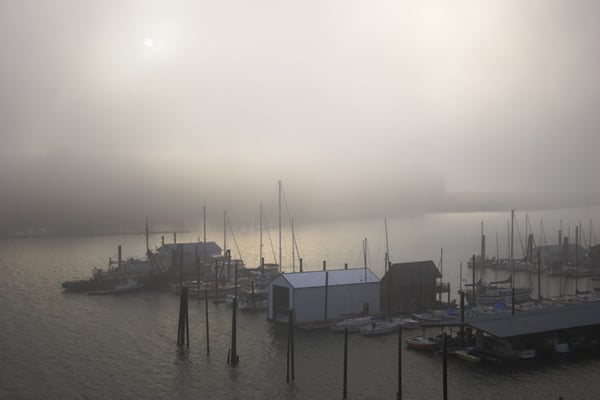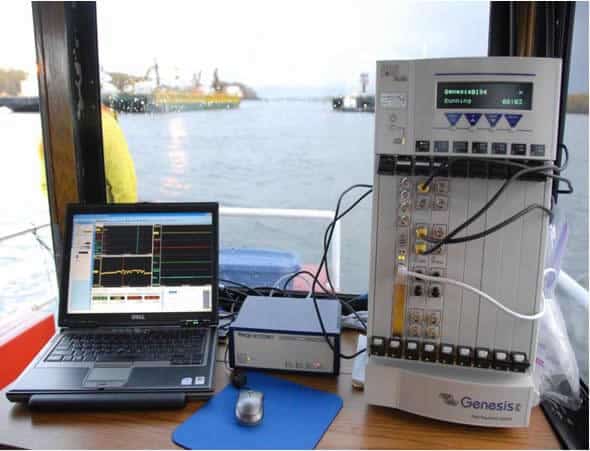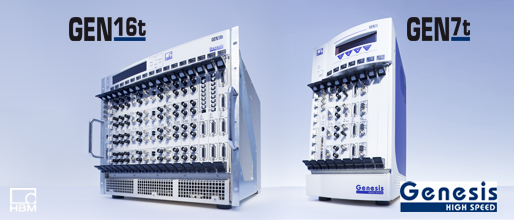Project Description
The Columbia River benefits from a well-established salmon industry that has been the focus of a great deal of environmental concern over the past several years. This made it imperative that there should be minimal risk to marine life during any blasting.
To meet these requirements, the US Army Corps of Engineers, as the project leader, stipulated a maximum allowable underwater overpressure of 70 psi (4.83 bars) at a distance of 140 ft (42.7 meters) from the closest blast hole. The blasting operations were undertaken outside of the salmon season to limit any possible damage to fish.
Controlled drilling and blasting
The project, which was completed at the end of February 2010, removed approximately 500,000 cubic yards (380,000 cubic meters) of basalt and bottom sediment and increased the river depth from 43 ft to 49 ft (13.1 m to 14.9 m) to enable transit by the latest generation of modern large-draft ships. Contract Drilling & Blasting of Bayonne, New Jersey, with over 18 years’ experience in controlled drilling and blasting on many major navigation channel and harbor expansion projects in North America and the Caribbean was responsible for preparing the river bedrock.
Aimone-Martin Associates, of Socorro, New Mexico, with over 35 years experience in blast monitoring and instrumentation for large construction, mining, and government projects deployed water-based sensors near the river bottom to record blast pressures.
Extreme testing conditions
The contract stipulated that the entire project had to be shut down if the pressure monitoring system ever failed to operate. This placed a great deal of pressure on the teams to provide a redundant system with multiple sensors in constant working order even though operating conditions were extreme and not conducive to the type of instrumentation used.
The Genesis HighSpeed GEN7t was used to record underwater pressure time histories for two different pressure sensors. The two sensors were deployed underwater 10 ft (3.0 m) off river bottom to meet contract specifications and at distances of 140 ft and 300 ft from each blast.


